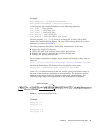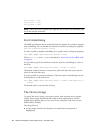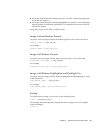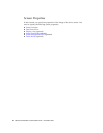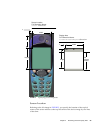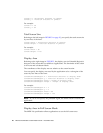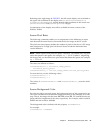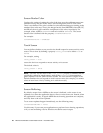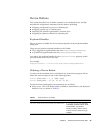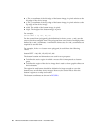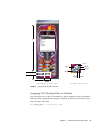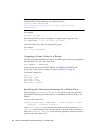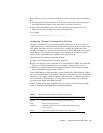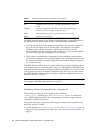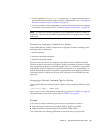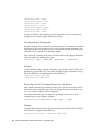
Chapter 3 Examining Device Property Files 29
Device Buttons
This section describes how to define a button on an emulated device and also
describes the assignments associated with the buttons including:
■ Assigning a keyboard key press to a button press
■ Assigning a game key to a button press
■ Specifying the character generated by a button press
■ Assigning an abstract command to a button press
Keyboard Handler
The set of names available for device buttons depends on the keyboard handler
being used.
There are two built-in keyboard handlers in the Toolkit:
■ ITU-T telephone keypad handler (the class DefaultKeyboardHandler)
■ A QWERTY keypad handler (the class QwertyKeyboardHandler)
You specify the keyboard handler by the keyboard.handler property, which
gives the name of the class to be used.
For example:
keyboard.handler = com.sun.kvem.midp.DefaultKeyboardHandler
Defining a Device Button
A button on the emulated device is defined in the main device property file by
name and screen location in one of the following forms:
button.<button_name> = x, y, width, height
button.<button_name> = x1, y1, x2, y2, x3, y3,...
For the first form (rectangular), the parameters are as follows:
■ button_name: The set of button names available is determined by the keyboard
handler in use, as shown in TABLE 2.
TABLE 2 Button Names Available
Keyboard Handler Button Names
com.sun.kvem.midp.DefaultKeyboardHandler 0, 1, 2, 3, 4, 5, 6, 7, 8, 9, POUND,
ASTERISK, POWER, SEND, END,
LEFT, RIGHT, UP, DOWN,
SELECT, SOFT1, SOFT2, SOFT3,
SOFT4, CLEAR, USER1 through
USER10



